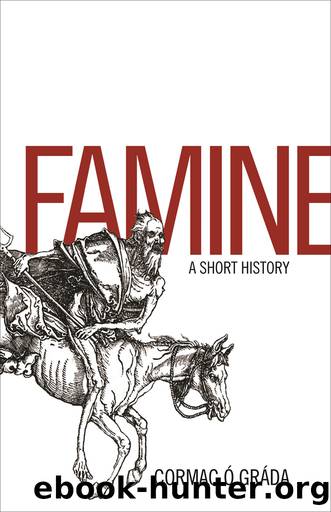Famine by Cormac Ó Gráda

Author:Cormac Ó Gráda
Language: eng
Format: epub
Publisher: Princeton University Press
Published: 2021-01-15T00:00:00+00:00
FOOD SUPPLY AND MARKET FAILURE
Long after the crisis became a famine, the official position in London, Delhi, and Calcutta was that Bengal contained enough food to feed everybody. Suhrawardy, a leading light in the Muslim League and minister for civil supplies in Bengal from April 1943 on, based his policy during the following crucial few months on the premise that there was enough food in the province and his responsibility was to allocate it equitably. Prices, he maintained, bore no relation to the true supply position in Bengal; there was no need to fear âany ultimate shortage of foodgrains.â10 Again and again, Suhrawardy maintained that the food supply problem was âpsychological.â This prompted influential Hindu nationalist opposition spokesman, Shyama Prasad Mookerjee, to caricature him as telling people, âDonât get panicky. I am sitting here as the civil supplies minister and telling you there is plenty of foodstuffs. We have statistics which we do not want to publish. Everything will be alright. Do not get panicky.â Mookerjee accused Suhrawardy of minimizing âthe gravity of the situation.â11
In May 1943, Suhrawardy, spurred on by the authorities in Delhi and London, asked newspaper editors to preach the âdoctrine of sufficiency and sufficiency and sufficiency . . . ad nauseamâ against the âpsychological factorsâ of âgreed and panic.â A media propaganda campaign aimed at âoutcasting the hoarderâ was buttressed by an official determination to prove âstatisticallyâ that Bengal contained enough food. Yet the propaganda also described the government as ârushing grain ships to India, even from rationed Allies, even at the expense of munitionsââan assertion that would have been more convincing had the public been given âsome general idea of the quantum of supplies coming forward instead of an occasional photograph of the unloading of a wagon.â12
In August, Suhrawardy admitted for the first time in public that distress was widespread, and certain to become more acute in the following months.13 He announced that rationing would be introduced in Calcutta and the industrial areas in October, meaning that Bengal was âin effect . . . being organized on a famine basis.â But there was little he could do; he might appoint an expert to devise a form of gruel that would contain as little rice as possible, but the Indian Famine Codes could not be applied because Bengal lacked the food needed to provide the prescribed rations. The rest of India, Suhrawardy said, was gradually realizing Bengalâs parlous state, but the omens were not so good: in the seven months beginning in December 1942 the rest of India had sent Bengal only a paltry forty-four thousand tons.14
The escalating crisis prompted the Statesman, hitherto a defender of official policy, to take a more critical stance. Realizing that the crisis menaced Bengal âin many ways,â and that months of âthis penury and disintegrationâ were likely to follow, it published several graphic photographs of the famine and instituted the practice of reporting information on the numbers who had died. When Suhrawardy held out the hope that prices would soon
Download
This site does not store any files on its server. We only index and link to content provided by other sites. Please contact the content providers to delete copyright contents if any and email us, we'll remove relevant links or contents immediately.
Cecilia; Or, Memoirs of an Heiress — Volume 1 by Fanny Burney(32503)
Cecilia; Or, Memoirs of an Heiress — Volume 2 by Fanny Burney(31913)
Cecilia; Or, Memoirs of an Heiress — Volume 3 by Fanny Burney(31898)
The Great Music City by Andrea Baker(31759)
We're Going to Need More Wine by Gabrielle Union(19004)
All the Missing Girls by Megan Miranda(15783)
Pimp by Iceberg Slim(14438)
Bombshells: Glamour Girls of a Lifetime by Sullivan Steve(14024)
For the Love of Europe by Rick Steves(13625)
Talking to Strangers by Malcolm Gladwell(13297)
Norse Mythology by Gaiman Neil(13281)
Fifty Shades Freed by E L James(13188)
Mindhunter: Inside the FBI's Elite Serial Crime Unit by John E. Douglas & Mark Olshaker(9266)
Crazy Rich Asians by Kevin Kwan(9224)
The Lost Art of Listening by Michael P. Nichols(7456)
Enlightenment Now: The Case for Reason, Science, Humanism, and Progress by Steven Pinker(7274)
The Four Agreements by Don Miguel Ruiz(6704)
Bad Blood by John Carreyrou(6584)
Weapons of Math Destruction by Cathy O'Neil(6220)
